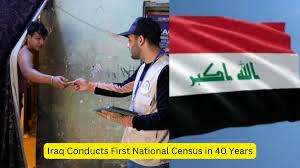Bengaluru Unveils First Digital Population Clock at ISEC
Bengaluru, the capital of Karnataka, has launched its first-ever digital population clock at the Institute for Social and Economic Change (ISEC). This innovative clock is designed to display real-time data on the city’s population, highlighting the increasing population growth and its socio-economic implications. The population clock aims to provide valuable insights into demographic trends and serve as a tool for urban planners and policymakers to address the challenges posed by rapid urbanization.
The digital clock is an initiative by ISEC, a leading research institution, and is part of a broader effort to engage citizens and raise awareness about the city’s demographic dynamics. The clock continuously updates itself to reflect the changing population numbers, offering a live visualization of Bengaluru’s growth. This tool will be vital in understanding how the city’s population is evolving over time and its impact on resources, infrastructure, and quality of life.

Why This News Is Important:
A Step Towards Better Urban Planning
The unveiling of Bengaluru’s first digital population clock marks a significant step in urban planning. As cities across India face rapid population growth, data-driven tools like the digital clock help policymakers plan better. By providing real-time population figures, the clock offers crucial insights into the pace of urbanization, helping authorities understand where additional resources, housing, or infrastructure might be needed.
Real-Time Data for Socio-Economic Development
The real-time population data displayed on the clock will aid in understanding demographic patterns. This is vital for crafting policies that address issues such as overcrowding, healthcare access, education, and sustainable development. By reflecting changes in the population instantly, the digital clock can assist in identifying shifts in population density and migration trends, which are important for long-term development planning.
Raising Public Awareness
The digital clock serves as an educational tool for citizens. It encourages them to be more conscious of demographic changes and their impacts on daily life. It also empowers people to better understand the need for sustainable growth and how it relates to personal and collective well-being.
Encouraging Data-Driven Governance
With a real-time display, the digital population clock serves as a perfect example of how modern technology can be leveraged for governance. It highlights the importance of data-driven decision-making and encourages transparency, ensuring that the public has access to relevant information that shapes urban life.
Historical Context:
Bengaluru, often referred to as the “Silicon Valley of India,” has witnessed a rapid rise in population in recent decades. The city’s growth has been fueled by its thriving IT sector, which attracts thousands of professionals from across the country. As of the last census, Bengaluru’s population surpassed 12 million, and the city continues to grow at a rapid pace, presenting a unique set of challenges in terms of infrastructure, public services, and sustainability.
The idea of using digital tools to monitor population growth and its impacts is not new. Many countries around the world have adopted similar initiatives. In the United States and several European countries, real-time data systems track everything from traffic to energy usage, helping to improve urban management. Bengaluru’s digital population clock is a significant step in adapting such global practices to the Indian context, ensuring that demographic data is used effectively for local governance.
Key Takeaways from “Bengaluru Unveils First Digital Population Clock at ISEC”
| Serial Number | Key Takeaway |
|---|---|
| 1 | Bengaluru has launched its first-ever digital population clock at ISEC. |
| 2 | The clock provides real-time data on Bengaluru’s population, which updates continuously. |
| 3 | The clock aims to help urban planners and policymakers address the challenges of rapid urbanization. |
| 4 | This initiative promotes data-driven governance and urban development planning. |
| 5 | It raises public awareness about the city’s demographic trends and their socio-economic impact. |
Important FAQs for Students from this News
What is Bengaluru’s digital population clock?
- Bengaluru’s digital population clock, unveiled at the Institute for Social and Economic Change (ISEC), is a real-time display of the city’s population growth. It updates continuously to show the current population figures and highlights the challenges of rapid urbanization.
What is the purpose of the digital population clock?
- The digital population clock aims to provide real-time data about Bengaluru’s population, helping policymakers and urban planners address urban challenges like infrastructure, housing, and resource allocation. It also raises public awareness about the city’s demographic trends.
Who developed Bengaluru’s digital population clock?
- The clock was developed by the Institute for Social and Economic Change (ISEC), which is a leading research institution in Bengaluru, focusing on social and economic issues.
How does the digital population clock help urban planning?
- The clock provides real-time population data, which is essential for urban planners to make informed decisions regarding the allocation of resources, infrastructure planning, and sustainable urban development.
Why is the digital population clock important for Bengaluru’s future?
- Bengaluru has been experiencing rapid population growth due to its booming IT sector. The digital clock helps track this growth in real-time, enabling the government to better manage the increasing demand for services, infrastructure, and resources.
Some Important Current Affairs Links














